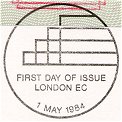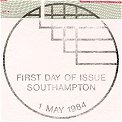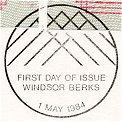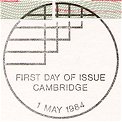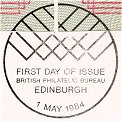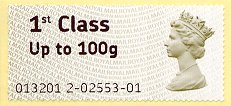|
 |
| 1984. The trial with the Frama vending machines |
In 1984, Royal Mail launched a pilot scheme, using 4 type FE 263 stamp vending machines, made by the Swiss company Frama. These machines brought about a significant change in the need for stamp coil dispensers and booklet vending machines that had been used for years, as they allowed the user to obtain stamps with the required face value.
The 4 machines were installed in the post offices of Cambridge HPO, London E.C. (King Edward Street), Southampton (Shirley) and Windsor (Branch Office). Two more distributors were planned to be installed in the main post offices in Edinburgh and Colchester, but that never came to fruition. The pilot scheme started on May 1st 1984 and the machines were in operation for 1 year, until April 30th 1985.
The Frama FE 263 distributors, installed in the United Kingdom, were electronic in nature, had a small screen and were red in colour. They were fitted with 2 slots accepting up to 6 different coins (5 from January 1985), and 3 buttons for the value selection. 2 of the buttons were programmed with the current postal rate for first and second class domestic mail. The user could buy ATMs of any face value from ½p to 16p (rising to 17p from August 28th 1984), in steps of ½p. From January 1st 1985, the machines would no longer accept the half-penny coins, so that from that date only variable value stamps with a face value between 1p and 17p, in steps of 1p could be bought.
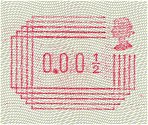 |
For the ATMs, the Frama vending machines used rolls of gummed paper with a security background of cross-hatched wavy lines in a grey-olive colour. The machines printed both the face value and the design, as part of the impression, in red ink.
The rolls were manufactured by Harrison & Sons, of High Wycombe, and the design was by Martin Newton. The rolls were capable of issuing about 1,400 stamps, with an approximate size of 40 x 32 mm. |
| There are some rare stamps printed on white paper, from a test roll used during the first day of issue, from the Frama vending machine installed in Windsor. |
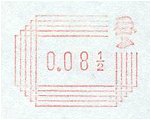 |
The British Philatelic service had made-up sets packaged in two options: The basic 3-values sets (3½p - 12½p -16p) and complete sets of the 32 values produced by the machines (½p to 16p, in ½p steps).
From August 28th 1984, with the increase in postage rates, they also sold 2 further values - 16½p and 17p. For the production of the sets of ATMs, the Philatelic Service used 3 special printers; 1 of them had the original typeface as used in the vending machines, but the other two had a modified printing, with slightly larger digits for the face value. It is difficult to appreciate differences with the naked eye and, in fact, they often appear mixed, in the sets sold by the Philatelic Service.
|
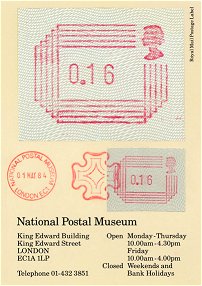 |
| For this issue, the Philatelic Service produced first day covers, with an illustration by Ken Briggs & Associates, showing the ease of operation of the distributors. These envelopes included different combinations of ATMs, and the postmark of the 4 post offices participating in the trial, plus that of the Philatelic Service in Edinburgh. |
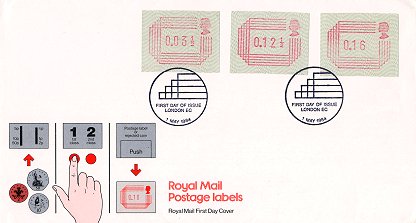 |
At the end of the pilot scheme and after the evaluation of the results, it was concluded that the machines did not meet the requirements of Royal Mail due to low usage by postal customers (except philatelists), the need for frequent maintenance, breakdowns,... so they withdrew them, completely, from service.
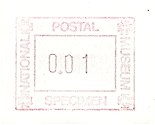 |
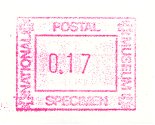 |
One of the machines was installed in May 1988 in the National Postal Museum in London, where it was in operation until April 1993 issuing specimen labels (with no postal value) on rolls of white gummed paper, with a special impression and printing in red or black ink. |
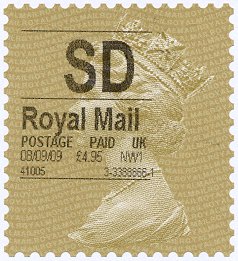 |
2009. The new Machin Head (Golden) Horizon labels. Articles >>> |
ATM Web - Spain and Latin American Postal Services: http://www.ateeme.net
© J. Jove - M. Sans. ATEEME. Variable value stamps study group. All rights reserved
This page was created in 2002 and last updated:
29.09.10
. English edition rewritten by S. Goodman (30.12.2008)
|




